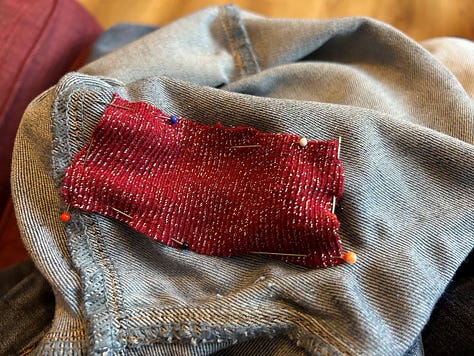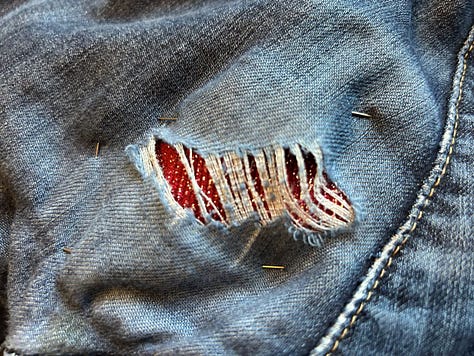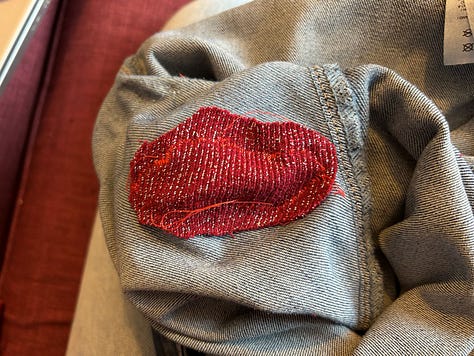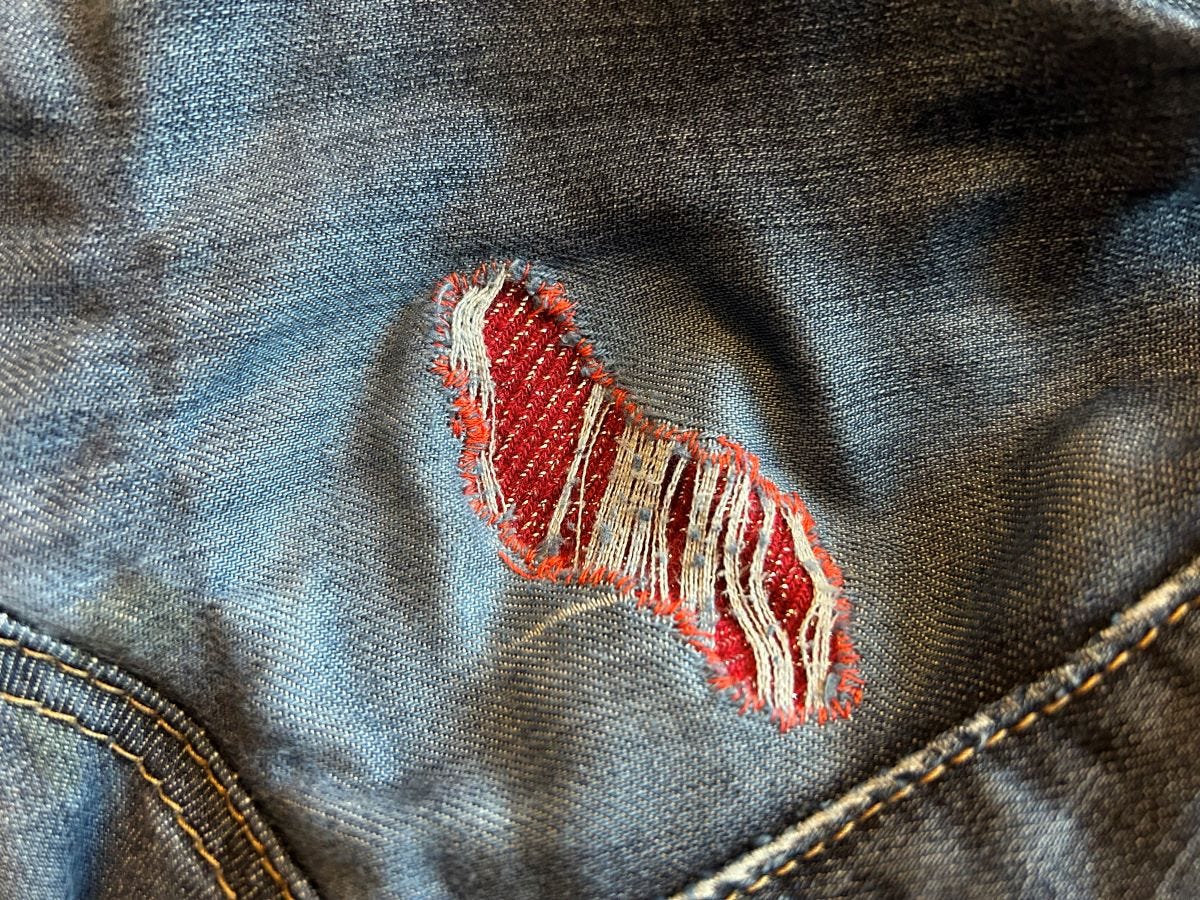Patching jeans, kintsugi style
Why this Japanese art of making repairs part of an object’s aesthetic is great for those of us with less than ideal mending skills…
I don’t normally patch my jeans. Once they’ve got a hole, that’s it, in the bin they go. I’m not especially good at sewing. My stitches aren’t neat or even. They’re not invisible and quite often I pull the thread too tight and the fabric puckers.
But it seems very wasteful to throw out an otherwise perfectly good pair of jeans just because there’s a hole in the crotch, where the tops of my thighs rub together. A pair that isn’t that old recently developed such a hole. So rather than chuck them, I decided to fix them, but for once I wouldn’t concentrate on getting it just right.
Kintsugi – meaning ‘golden joinery’ – is the Japanese art of repairing broken pottery with a lacquer mixed with gold, silver or platinum. The result highlights rather than hides the repair. The philosophy behind it is that the breakage and subsequent repair are part of the history of the object, not something to be disguised.
Life’s flaws
Wear and tear is an inevitable part of an object’s life and use. A thing – whether that’s a pot or pair of jeans – can’t remain in a perfect unchanging state. Fabrics will wear away; plates will chip and crack. That’s just part of their existence. Kintsugi recognises this and instead of seeing such changes as flaws or imperfections to be hidden, it emphasises them as integral to the object’s journey, to its identity as something we use in our everyday lives.
I can’t help but think we should apply this to humans too.
Now, I can’t pretend to understand kintsugi in all its complexity and I’m not claiming that my patching gets close to its true nature. But I do understand making repairs that aren’t neat and invisible.
No rough stuff
I recently read an article in which the author was taking part in a kintsugi class. Participants had to bring an item of clothing that needed fixing with them. Before the repairs could start, they had to ‘rough up’ the imperfection to make the repair even more noticeable.
This doesn’t seem to be in the spirit of kintsugi to me. Deliberately causing extra damage for aesthetic reasons isn’t part of that object’s journey. I can’t see a Japanese craft master, on discovering a cracked mug, chucking it on the floor so that their skill with gold lacquer is more obvious.
I didn’t do this with my jeans. It seems pointless. Instead I found some bright red and sparkly fabric I could use as a patch. It was cut from a sock. Sadly not an old sock, one that I got only a few months ago. But one the pair of which had developed a huge hole after washing. So using the surviving sock to prolong the life of my jeans seemed appropriate.
Down to size
I cut it to size and pinned it in place. In the spirit of kintsugi I chose a bright red thread rather than something that would disappear into my stonewashed blue denim and a stitch that would stand out. I guess the result is something more like embroidery than a mending stitch. But only if you use a very loose interpretation of embroidery.
I like the result. The red sparkly material shows through the frayed material of the jeans and the red cotton forms a nice line around the edges of the hole. The jeans have gone in the wash now. All that remains to be seen is if the mend is comfortable or if the material will rub uncomfortably against that sensitive skin at the top of my thighs.
Is this ‘real’ kintsugi? No, not even close. But it is inspired by the artform and I wouldn’t have attempted it if I hadn’t heard of kintsugi. Kintsugi gives those of us who aren’t great at sewing a reason to just give it a go and not worry about the result.






